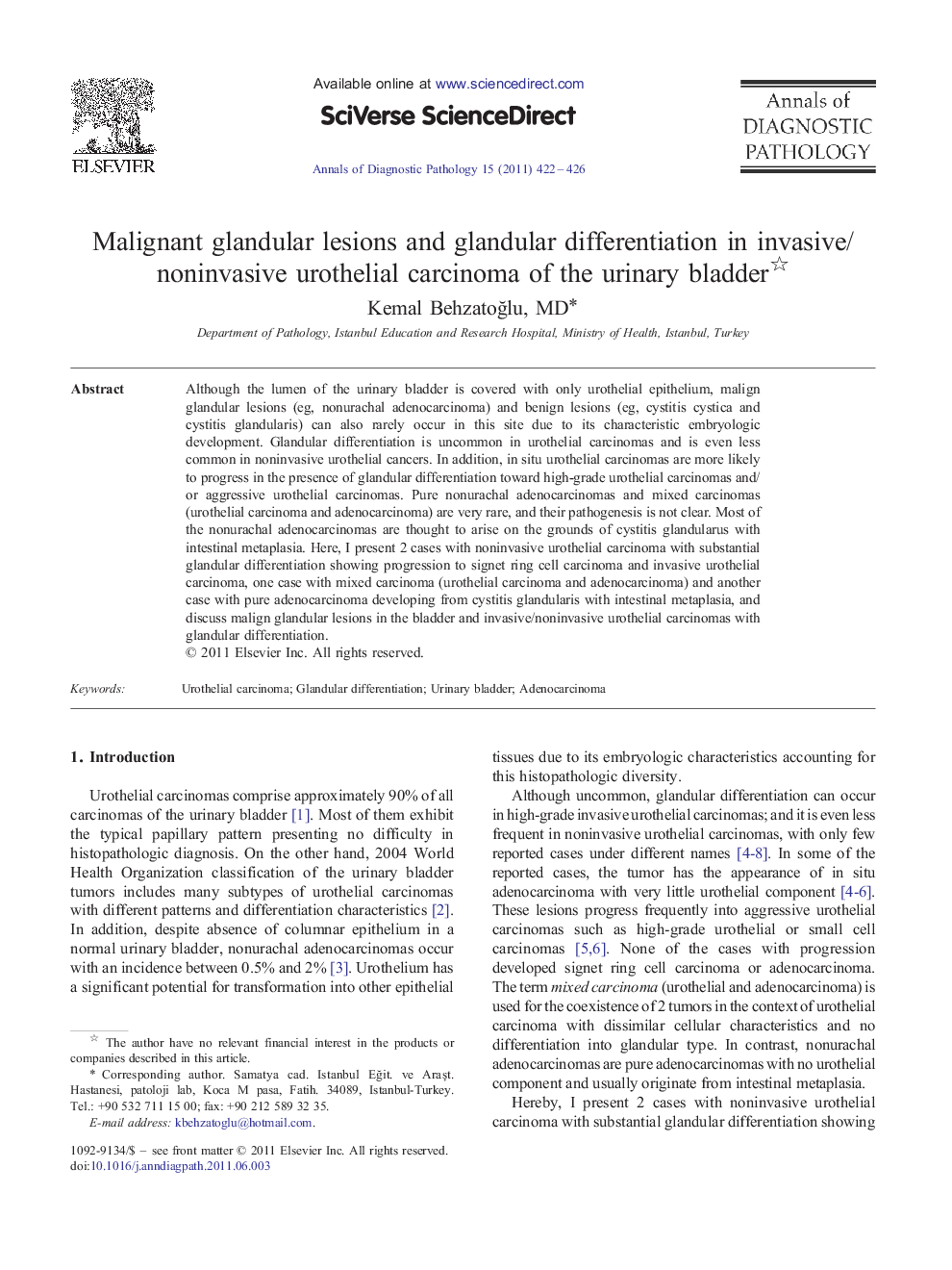| Article ID | Journal | Published Year | Pages | File Type |
|---|---|---|---|---|
| 4130408 | Annals of Diagnostic Pathology | 2011 | 5 Pages |
Although the lumen of the urinary bladder is covered with only urothelial epithelium, malign glandular lesions (eg, nonurachal adenocarcinoma) and benign lesions (eg, cystitis cystica and cystitis glandularis) can also rarely occur in this site due to its characteristic embryologic development. Glandular differentiation is uncommon in urothelial carcinomas and is even less common in noninvasive urothelial cancers. In addition, in situ urothelial carcinomas are more likely to progress in the presence of glandular differentiation toward high-grade urothelial carcinomas and/or aggressive urothelial carcinomas. Pure nonurachal adenocarcinomas and mixed carcinomas (urothelial carcinoma and adenocarcinoma) are very rare, and their pathogenesis is not clear. Most of the nonurachal adenocarcinomas are thought to arise on the grounds of cystitis glandularus with intestinal metaplasia. Here, I present 2 cases with noninvasive urothelial carcinoma with substantial glandular differentiation showing progression to signet ring cell carcinoma and invasive urothelial carcinoma, one case with mixed carcinoma (urothelial carcinoma and adenocarcinoma) and another case with pure adenocarcinoma developing from cystitis glandularis with intestinal metaplasia, and discuss malign glandular lesions in the bladder and invasive/noninvasive urothelial carcinomas with glandular differentiation.
